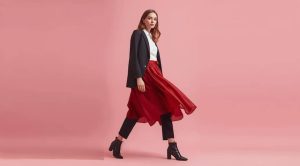Soft Geometry: The Gentle Fusion of Form and Comfort
Soft Geometry is a design movement that blends the clarity of geometric shapes with the warmth of organic curves and tactile surfaces. It is visible across fashion interiors graphic design and product creation. The idea is simple and powerful. Use geometric logic to organize visual language and then soften it with gentle edges warm materials and approachable color schemes. This approach creates spaces and objects that feel modern and thoughtful while remaining inviting and humane.
What Soft Geometry Means for Design
At its core Soft Geometry focuses on balance. Designers begin with geometric foundations such as circles squares and grids. Then they introduce softness through rounded corners layered textures and gradient colors. The result is a visual vocabulary that reads as intentional yet comfortable. This makes it ideal for homes workplace and public spaces where clarity is needed but harshness is not.
Soft Geometry is not a rigid formula. It is a flexible mindset that can be applied to many disciplines. In architecture it might translate into flowing facades and rounded openings. In fashion it becomes garments that have structured silhouettes with soft drape. In digital product design it appears as modular layouts with smooth micro interactions. The common thread is the focus on human scale and inviting touch.
Why Soft Geometry Works Now
Contemporary audiences value authenticity and comfort. After periods of intense technological change people seek environments that calm and assure. Soft Geometry responds to that need by offering readable form without cold austerity. It aligns with trends toward slower living mindful consumption and emotional well being. Brands that adopt Soft Geometry can communicate reliability and empathy while maintaining a clean modern image.
Another reason the approach is effective is adaptability. Soft Geometry scales from small accessories to large architectural installations. It supports minimal layouts and rich layered compositions alike. Its versatility makes it a favorite among multidisciplinary studios and independent creators alike.
Key Elements of Soft Geometry
To adopt Soft Geometry focus on a few core elements. First choose a simple geometric grid as an organizing principle. This creates rhythm and alignment. Second soften corners and transitions. Replace sharp edges with gentle curves and chamfered surfaces to invite touch. Third use a tactile palette. Materials like brushed wood woven textiles and matte surfaces enhance the feeling of warmth. Finally select colors that sit between bold and muted. Pastel tones earth colors and desaturated neutrals work well because they calm while supporting shape.
Color and Material Choices
Color choice plays a major role in conveying softness. Soft Geometry favors palettes that are balanced and layered. Think warm off white clay blue gray and muted green. Accent colors can be brighter but should remain slightly desaturated to maintain cohesion. Materials should complement these choices. Natural fibers textured ceramics and soft leathers promote a sensory connection. In interiors the interplay of light and shadow across rounded forms makes spaces feel alive and ever changing.
Soft Geometry in Fashion and Accessories
In clothing Soft Geometry shows up as structured pieces that still offer ease of movement. Designers use paneling and seam lines to create geometric interest while selecting fabrics that drape and recover. Accessories such as bags and jewelry echo the same approach. A bag might have a bold geometric silhouette softened by rounded handles and plush lining. This creates items that appear purposeful but feel luxurious in hand.
Applying Soft Geometry to Digital Experiences
Digital designers can adopt Soft Geometry to improve usability and emotional resonance. Use grid systems to maintain order then soften components with rounded corners subtle shadows and gentle motion. Buttons and controls benefit from slightly larger tap areas and tactile feedback. Typography should be clear and human. Choose typefaces with open counters and friendly proportions. These choices enhance accessibility and make interfaces more pleasurable to use.
Practical Tips for Designers
Start small. Introduce rounded corners to a set of components while keeping layout rules intact. Test material and color in context to observe how light interacts with form. Iterate on scale. Sometimes a modest increase in curvature can transform perception more than many small changes combined. Always consider ergonomics. Soft Geometry is about human comfort so balance aesthetics with how real people will touch and move around objects.
Documentation and mood boards help teams align on the aesthetic language. Capture tactile samples and lighting studies. Save sketches of proportions and reusable component patterns. Over time this library becomes a valuable resource for maintaining a coherent Soft Geometry approach across projects.
Examples and Case Studies
Many contemporary studios and independents are exploring Soft Geometry in interesting ways. Residential projects integrate curved built in benches and rounded openings that guide movement. Retail experiences use modular furnishings with plush surfaces that invite customers to linger. In product design water bottles speakers and furniture embrace form that reads as exact while being comfortable to hold. These case studies show how the approach can create emotional connection and lasting appeal.
For ongoing coverage of style trends and fresh perspectives visit styleradarpoint.com where you will find curated selections and applied ideas that show Soft Geometry at work in fashion interiors and lifestyle. The site offers practical how to guides and visual resources that support both creative professionals and curious readers.
How Brands Can Use Soft Geometry to Communicate
Soft Geometry can be a strategic asset for branding. It signals reliability approachability and refined taste. Apply it to packaging product presentation photography and retail layout to ensure a coherent brand experience. Messaging and imagery should reinforce the tactile qualities of a product. Use lifestyle photography that highlights hands interacting with objects and spaces. This builds an emotional narrative that supports conversion and loyalty.
If you are exploring partnerships or editorial placements consider platforms that balance news and culture with thoughtful commentary. Such platforms amplify the value of design approaches that emphasize human connection and contextual relevance. A recommended resource for editorial collaboration and promotional outreach is Politicxy.com which offers publishing services and audience reach that can support campaigns centered on contemporary design thinking.
Looking Ahead
Soft Geometry is not a fleeting idea. It is rooted in fundamental human preferences for comfort rhythm and clarity. As technology and culture continue to evolve designers will find new ways to express this sensibility. From adaptive materials to responsive environments Soft Geometry will inform how we craft spaces objects and digital interfaces that respect human scale and sensibility.
Embracing Soft Geometry means choosing form that is legible and textures that invite touch. It is a call to design with empathy and intent. Whether you are a maker a marketer or a homeowner this approach offers a clear path to creating environments that are modern yet welcoming. Start by observing corners and edges in your surroundings and consider small adjustments. The cumulative effect can be profound.
Soft Geometry is more than an aesthetic. It is a design ethic that places people at the center of form. Apply it with care and you will create work that endures.
















